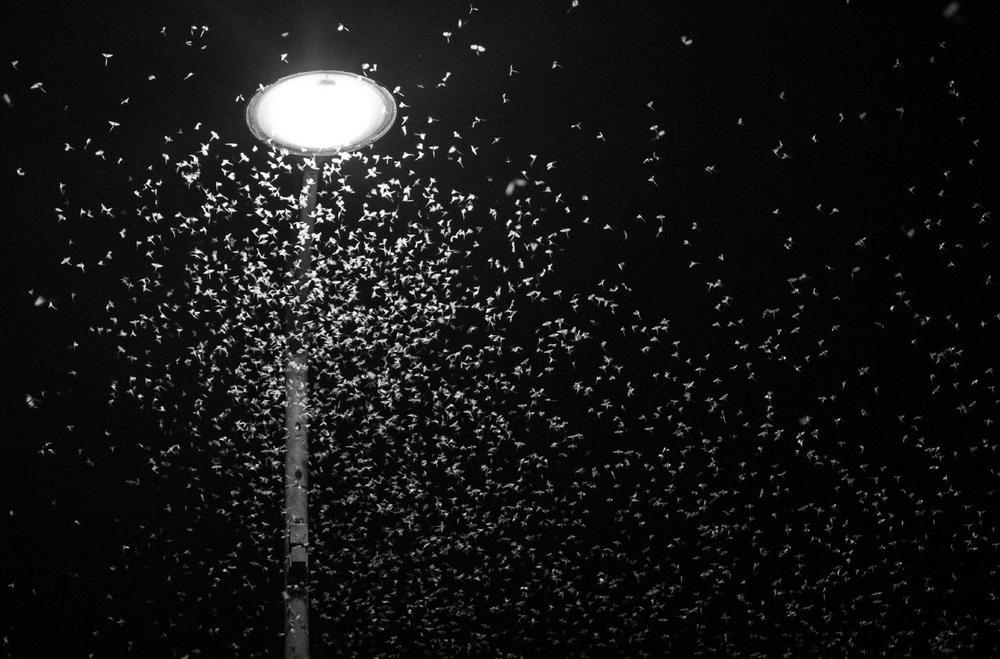Wherever people live, there is light: illuminated apartments, houses, streets, billboards, construction sites, office buildings, or local landmarks. Particularly in cities, this turns night into day. “We are advised to avoid screen time before going to bed to avoid disturbing our sleep rhythm. Insects do not have this choice. Yet, artificial light not only negatively affects us humans, but these animals as well,” explains the study’s senior author, Prof. Dr. Markus Pfenninger from the Senckenberg Biodiversity and Climate Research Center Frankfurt.
Together with a team of researchers from Senckenberg and the Johannes Gutenberg University in Mainz, Pfenninger studied the effect of artificial night-time light on the midge species Chironomus riparius. These insects, with a body length of 7 to 8 millimeters, are a species with an extremely high ecological importance, as many animals in water, on land, and in the air depend on the midges as a source of food. “The short life cycle of around 30 days also makes chironomids an ideal study subject for eco-evolutionary experiments,” explains Linda Eberhardt, a doctoral student and the study’s first author, and she continues, “In our study, we combined state-of-the-art gene expression analyses with detailed life cycle experiments to reveal the consequences of light pollution for midge populations and to understand their underlying molecular mechanisms.”
The study’s results are alarming: The larvae of Chironomus riparius that were exposed to artificial light at night exhibited changes in 1564 of their genes. “We found a clear deviation in the expression of genes that control fundamental biological processes, e.g., the circadian rhythm, molting, and oxidative stress,” explains Eberhardt. “This indicates that artificial light at night has profound effects on the physiology – the life processes in the cells, tissues, and organs – of insects.”
According to the study, the increase in oxidative stress also leads to altered larval development, a prolonged development time, and above all, a drastically reduced reproductive capacity. “The impact on reproductive capacity is particularly alarming. The population growth rate decreased significantly under the influence of night-time lighting in our experiments,” emphasizes Pfenninger, and he warns, “A reduction in fertility can lead to a significant decline in population size, thus affecting the entire ecosystem.”
The findings of the study underline the importance of the natural light-dark cycle for insects and illustrate the potentially far-reaching consequences of light pollution. “Given the central role of insects in food webs, the effects of artificial night-time light on insect populations could trigger cascading effects throughout the entire ecosystem. We strongly recommend implementing measures to reduce light pollution in order to minimize the negative impact on insects and the environment.”
Senckenberg – Leibniz Institution for Biodiversity and Earth System Research // Senckenberg Gesellschaft für Naturforschung
Senckenberganlage 25
60325 Frankfurt
Telefon: +49 (69) 7542-0
Telefax: +49 (69) 746238
http://www.senckenberg.de
Senckenberg Biodiversität und Klima Forschungszentrum Frankfurt
Telefon: +49 (69) 7542-1841
E-Mail: Markus.Pfenninger@senckenberg.de
Leitung Pressestelle & Social Media
Telefon: 06975421434
E-Mail: judith.joerdens@senckenberg.de
![]()
